Road bikes, especially those with lightweight carbon frames like the Trifox Carbon Road Bike Frame, are precision machines built for speed and efficiency. But carbon fiber, while strong and responsive, requires careful handling to avoid damage. Whether you’re a daily commuter or a weekend racer, here’s how to protect your road bike and keep it performing like new for years.
1. Clean It Regularly
Dirt, grime, and road salt aren’t just unsightly—they can corrode components and wear down surfaces. After every ride, wipe down the frame with a damp cloth, and use a gentle bike-specific cleaner for deeper cleans. Avoid high-pressure hoses, which can force water into bearings or crack carbon fiber if aimed directly at joints.
2. Store It Properly
Carbon frames are tough but not indestructible. Store your bike in a cool, dry place away from direct sunlight (UV rays can degrade resin over time). Use a sturdy bike stand or wall mount to prevent accidental falls. If storing long-term, relieve tension on the chain and tires to reduce stress on components.
3. Avoid Impacts
Carbon excels at absorbing road vibrations but is vulnerable to sharp impacts (e.g., potholes, curbs, or rough handling). Inspect your frame after crashes or hard hits for cracks, chips, or delamination. Even small damage can compromise structural integrity. For added protection, consider frame-safe accessories like silicone protectors on chainstay edges.
4. Check Bolts and Components
Loose bolts can lead to misaligned parts or catastrophic failures. Use a torque wrench to ensure all bolts (stem, seatpost, derailleur hanger) are tightened to the manufacturer’s specifications. Over-tightening carbon parts can crush the material, so follow guidelines carefully.
5. Use Protective Gear
Invest in frame protection film or neoprene sleeves for high-risk areas like the downtube, chainstays, and fork. These shields guard against scratches from gravel, chain slap, or transport mishaps. For Trifox carbon frames, which prioritize weight savings and stiffness, a little extra protection ensures aesthetics and performance stay intact.
6. Transport with Care
Remove the wheels and use a padded bike bag when traveling. Never toss your bike into a car or rack without securing it—carbon frames can crack if jostled against hard surfaces.
7. Schedule Professional Inspections
Even if your bike seems fine, have a mechanic inspect the frame and components annually. They’ll spot hidden issues like hairline cracks or bearing wear before they become costly repairs.
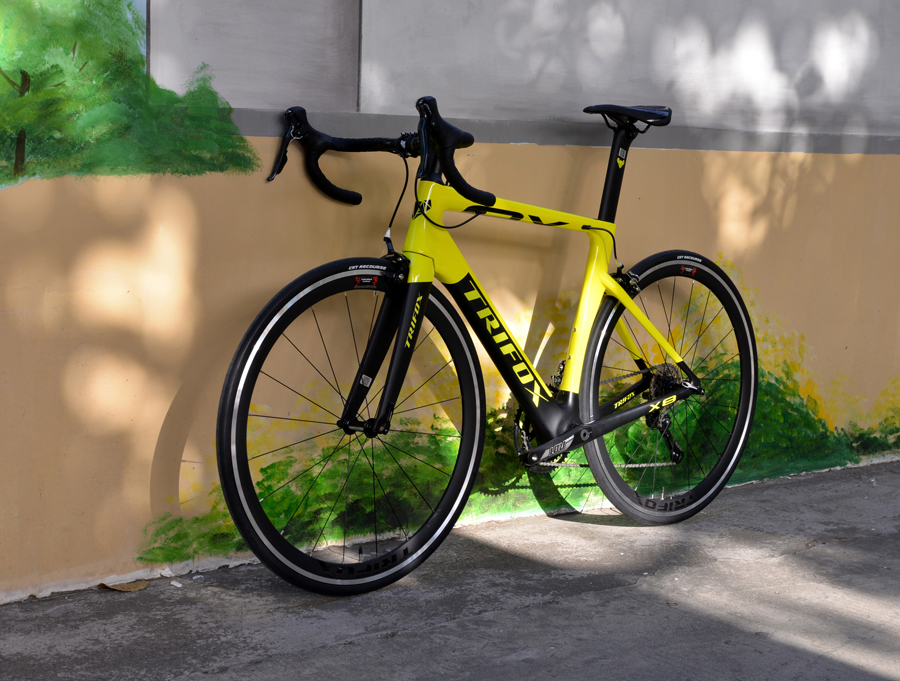
Final Tip: Start with a Quality Frame
A durable carbon frame, like Trifox’s models, is engineered to withstand the demands of road riding while offering crash replacement warranties for peace of mind. Pair it with smart maintenance habits, and your bike will reward you with miles of smooth, reliable performance.
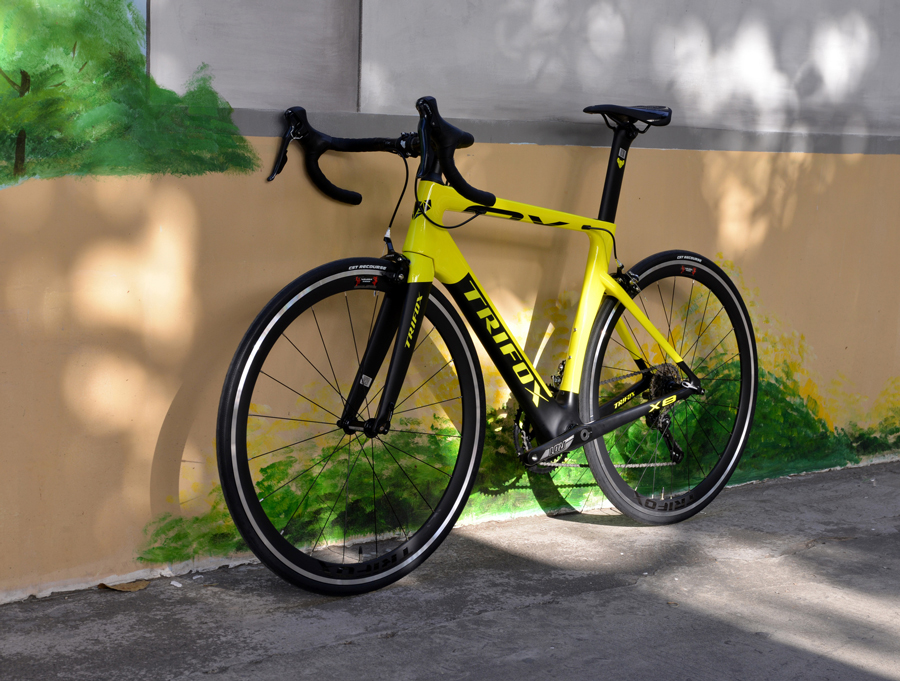
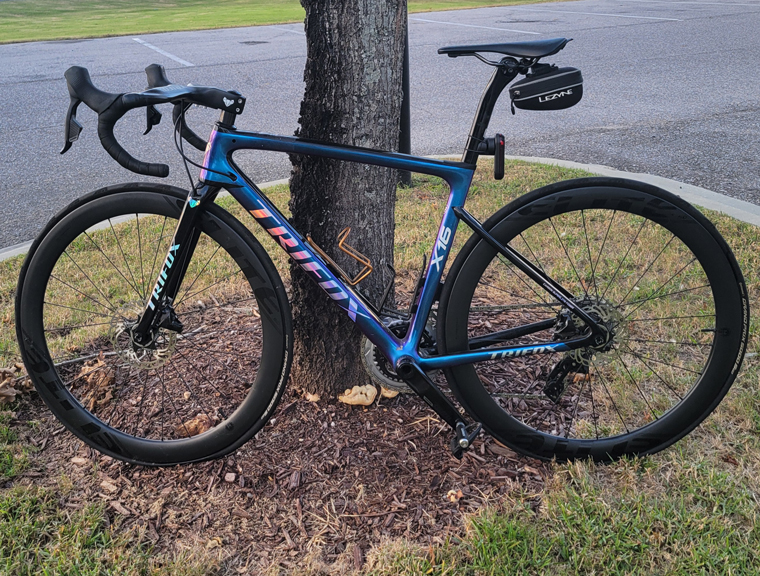
The question of how many gears a road bike “should” have doesn’t have a one-size-fits-all answer. From vintage 5-speed setups to modern 12-speed electronic groupsets, gear counts have evolved dramatically. The right number depends on your riding style, terrain, and budget. Let’s break down the factors to help you find your ideal setup.
The Evolution of Speed
Road bikes once topped out at 10 speeds, but today’s drivetrains offer up to 12 or even 13 cogs. More gears mean smaller jumps between ratios, letting you maintain optimal cadence (pedaling rhythm) on rolling terrain or long climbs. However, more isn’t always better—complexity, weight, and cost increase with each added cog.
Key Considerations
1. Rider Needs: Competitive cyclists often prefer 11- or 12-speed systems for seamless shifting under load. Casual riders or commuters might prioritize simplicity with 8-10 speeds.
2. Terrain: Hilly routes demand wider gear ranges. A compact chainset paired with an 11-34T cassette (common in 11-speed setups) offers climbing ease without sacrificing top-end speed.
3. Maintenance: More gears mean tighter tolerances. A 9- or 10-speed drivetrain is easier to adjust and cheaper to replace.
The Sweet Spot: 11-Speed Dominance
For most road riders, 11-speed strikes a balance. It provides ample range (e.g., 11-30T or 11-34T cassettes) and smooth transitions between gears. Brands like Shimano 105, SRAM Rival, and Campagnolo Centaur offer reliable mid-tier 11-speed groupsets that blend performance and affordability.
When Less is More
Beginners or budget-conscious riders might opt for 8-10 speeds. These systems are robust, cost-effective, and sufficient for flat to moderate terrain. Plus, wider gear spacing can reduce shifting frequency, which is less mentally taxing on long rides.
Cutting-Edge: 12-Speed and Beyond
High-end 12-speed groupsets (Shimano Dura-Ace, SRAM Red) cater to racers and tech enthusiasts. Hyper-precise shifting and expanded gear ranges maximize efficiency, but they come at a premium price—and not all frames/wheels are compatible.
Trifox's Approach: Versatility Meets Value
Trifox road bikes, offer customizable builds to match your gear preferences. Whether you prioritize the crispness of 11-speed Shimano or the simplicity of a 9-speed commuter setup, their ultralight carbon frames adapt to your needs without compromising durability.
Final Shift
Your ideal gear count hinges on where and how you ride. More speeds deliver precision, but simplicity has its perks. Test different setups if possible, and remember: the best drivetrain is the one that keeps you pedaling—and smiling—mile after mile.

The cycling world is evolving, and disc brakes are now the gold standard for road bikes. Once reserved for mountain bikes, this technology has revolutionized road cycling, offering unparalleled performance and safety.
1. All-Weather Reliability
Disc brakes excel in diverse conditions. Unlike rim brakes, which lose grip in rain or mud, disc rotors provide consistent stopping power. This reliability boosts confidence on wet descents or gritty roads, making them a must-have for commuters and racers alike.
2. Wider Tire Compatibility
Modern road bikes prioritize comfort and speed, embracing wider tires (28mm+). Disc brakes eliminate rim wear, allowing frames like Trifox’s carbon models to accommodate larger tires without compromising clearance. The result? A smoother ride and improved traction.
3. Precision Control
Disc brakes offer superior modulation, letting riders fine-tune braking force. This precision prevents skidding and reduces fatigue on long rides, enhancing safety during technical maneuvers or crowded group rides.
4. Aerodynamic Advantage
Disc-specific frames, such as Trifox’s carbon road bike frames, streamline brake integration. Without rim calipers, designers optimize tube shapes for aerodynamics, cutting through wind with minimal drag—ideal for speed seekers.
5. Long-Term Durability
Disc systems reduce rim stress, prolonging wheel life. Paired with robust carbon frames, cyclists enjoy lighter, sturdier builds that withstand rigorous use, from climbs to sprints.

Disc brakes aren't a trend—they’re the future. As cyclists demand versatility and performance, brands like Trifox Bike deliver with disc-ready carbon frames that merge innovation and agility. Ready to upgrade? Explore Trifox’s cutting-edge options here and join the revolution.

For cyclists obsessed with shaving seconds off their personal bests, every component choice matters. But does upgrading to a carbon aero frame deliver the speed gains it promises? Let’s break down the pros, cons, and key considerations.
Why Carbon Aero Frames Shine
Carbon aero frames are engineered for speed. Their lightweight construction enhances acceleration and climbing efficiency, while aerodynamic shapes slice through wind resistance—critical during time trials or flat-road sprints. Studies suggest aero frames can reduce drag by up to 30%, translating to measurable time savings over long distances. For racers or triathletes, these gains justify the premium price tag.
The Trade-Offs
Cost is the biggest hurdle. High-quality carbon frames, can cost 2–3x more than aluminum alternatives. Durability concerns also linger; carbon is strong but prone to damage from impacts, though modern manufacturing has improved resilience. Additionally, stiffness optimized for power transfer might sacrifice comfort on rough terrain, a consideration for endurance riders.
Who Should Invest?
If you're competing or prioritize marginal gains, a carbon aero frame is a worthy upgrade. Casual riders, however, may find the benefits negligible compared to the cost. For budget-conscious speed seekers, TrifoxBike offers balanced options, blending performance and value.
Maximizing Your Investment
Proper maintenance is key. Regularly inspect for cracks, avoid overtightening components, and store your bike carefully. Pair your frame with aero wheels and a optimized riding position to unlock full potential.
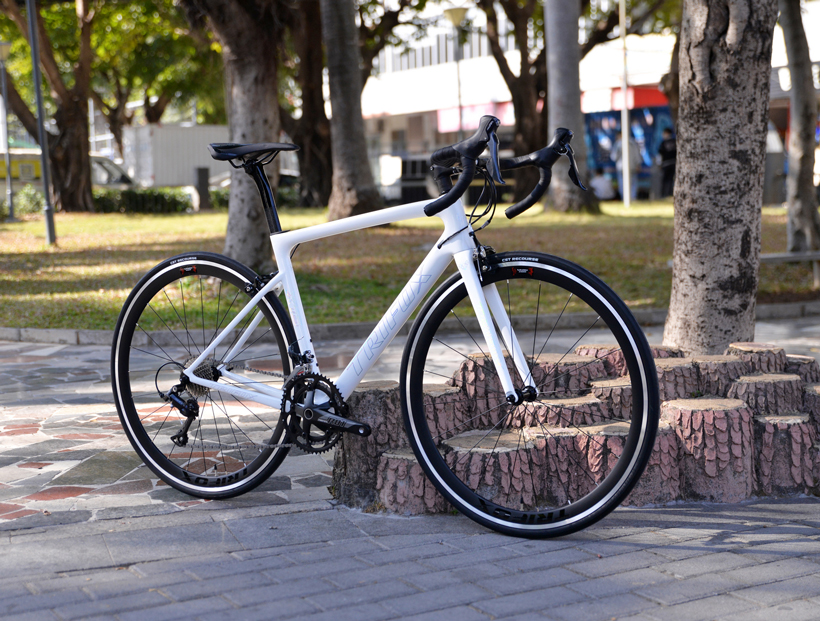
For serious speed enthusiasts, a carbon aero frame is a game-changer. Its blend of weight savings and aerodynamics offers tangible advantages where seconds count. Explore TrifoxBike’s range to find a frame that aligns with your goals—and ride faster, smarter, and farther.

For cyclists chasing every second, the allure of a carbon aero road bike frame is undeniable. Sleek, wind-cheating designs promise speed gains—but with premium price tags, are they worth it?
Why Carbon Aero Frames?
Carbon aero frames, like Trifox’s X8, are engineered to minimize drag while maximizing stiffness. Key benefits include:
Aerodynamics: Tube shapes and frame profiles slice through wind, saving watts at high speeds.
Lightweight: High-quality carbon shaves grams without sacrificing strength.
Responsive Ride: Optimized stiffness ensures efficient power transfer during sprints or climbs.
For racers and time-trialists, these features can translate to tangible performance gains—think seconds saved over miles.
The Cost Consideration
Carbon aero frames aren't cheap. The Trifox X8 sits in the mid-to-high range, offering pro-level engineering at a fraction of boutique brand prices. However, budget-conscious riders might question if the speed boost justifies the cost.
Ask yourself:
How competitive are you? Marginal gains matter most in races or timed events.
Do you ride long distances? Aero savings compound over miles, reducing fatigue.
Is your current bike holding you back? Upgrading a heavy or outdated frame can unlock new PRs.
Durability & Practicality
While carbon is durable, aero frames can be less forgiving on rough roads compared to endurance-focused designs. The X8’s V-brake compatibility adds versatility, but disc brakes (not featured here) offer better stopping power in wet conditions.
Who Should Invest?
Racers: Every watt saved counts.
Tech-Savvy Enthusiasts: Love cutting-edge gear? The X8’s blend of aerodynamics and classic V-brake compatibility offers a unique edge.
Upgraders: Pairing the frame with high-end components (wheels, groupset) maximizes ROI.

If speed is your obsession, a carbon aero frame like the Trifox X8 is a worthy investment. Its balance of aerodynamics, weight, and stiffness caters to riders hungry for performance. For casual cyclists, the cost may outweigh the benefits—but for those chasing podiums, it's a game-changer.

If you're considering diving into the world of road cycling, one of the first questions you’ll likely ask is, “How much does a good road bicycle cost?” The answer isn’t straightforward, as road bikes come in a wide range of prices depending on their components, materials, and intended use. Let’s break down the factors that influence the cost and help you determine what you can expect to pay for a quality road bike.
Entry-Level Road Bikes ($500 - $1,000)
For beginners or casual riders, entry-level road bikes are a great starting point. These bikes typically feature aluminum frames, basic components, and mechanical shifting systems. While they may lack the advanced features of higher-end models, they are reliable, lightweight, and perfect for commuting, fitness riding, or weekend adventures. Brands like Trifox Bike offer affordable options that deliver excellent value for money.
Mid-Range Road Bikes ($1,000 - $3,000)
Mid-range road bikes strike a balance between performance and affordability. These bikes often feature carbon fiber frames, which are lighter and more efficient than aluminum, along with better-quality components like hydraulic disc brakes and mid-tier drivetrains (e.g., Shimano 105 or SRAM Rival). If you’re serious about cycling and want a bike that can handle longer rides, faster speeds, and more varied terrain, this price range is a solid investment.
High-End Road Bikes ($3,000 - $7,000+)
High-end road bikes are designed for performance enthusiasts and competitive cyclists. They boast top-tier carbon frames, advanced aerodynamic designs, and premium components like electronic shifting (e.g., Shimano Dura-Ace or SRAM Red). These bikes are incredibly lightweight, stiff, and responsive, making them ideal for racing or high-intensity training. While the price tag is steep, the performance gains are undeniable.
Custom and Premium Options ($7,000+)
For those seeking the ultimate road bike, custom or premium models offer unparalleled craftsmanship and performance. These bikes often feature bespoke designs, cutting-edge materials, and the latest technological innovations. If you’re a professional rider or simply want the best of the best, this category is worth considering.
Why Choose a Carbon Road Bike?
Carbon fiber is the material of choice for high-performance road bikes due to its lightweight, stiffness, and vibration-damping properties. Trifox Bike offers a range of carbon road bike frames that combine affordability with top-tier performance, making them an excellent option for riders looking to upgrade without breaking the bank.
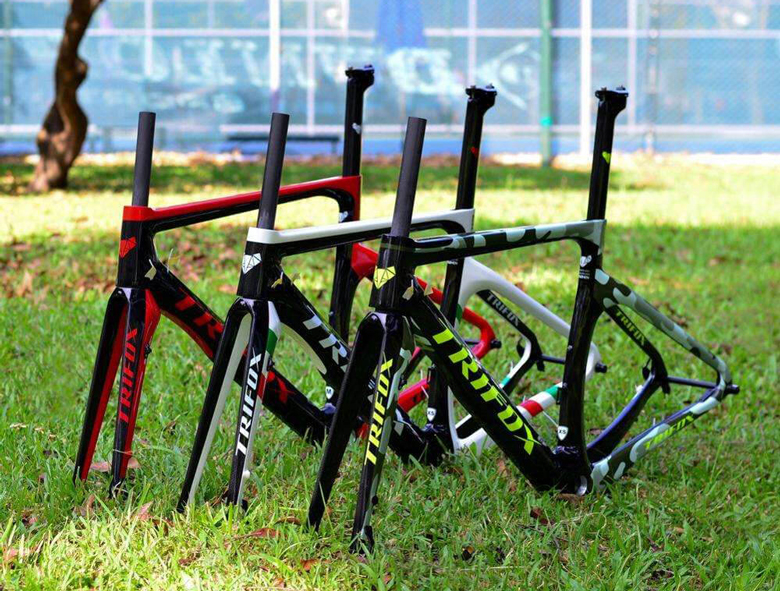
The cost of a good road bicycle depends on your needs, goals, and budget. Entry-level bikes are perfect for beginners, while mid-range and high-end models cater to more experienced riders. If you’re looking for a balance of performance and value, a carbon road bike from Trifox Bike is a fantastic choice. Whether you’re commuting, training, or racing, investing in the right road bike will enhance your riding experience and help you achieve your cycling goals. Happy pedaling!
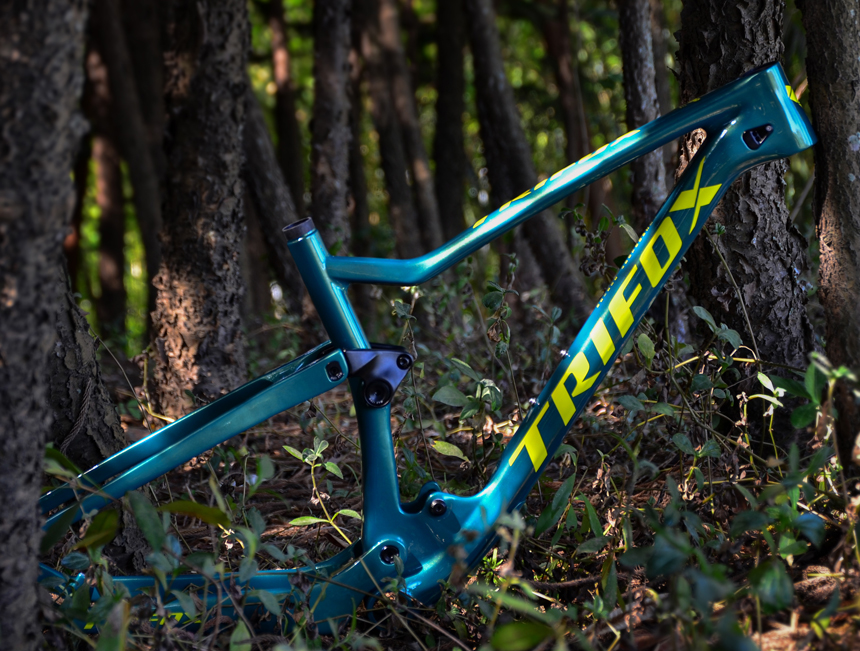
When it comes to high-performance cycling, the material of your bike frame plays a pivotal role in your overall experience. Carbon fiber has become the go-to choice for serious cyclists due to its light weight, incredible strength, and superior ability to absorb road vibrations.
Trifox Carbon Fiber Frames: A Commitment to Performance
Trifox has quickly earned a reputation for producing some of the most advanced carbon fiber frames on the market. Specializing in road, mountain, and gravel bikes, the brand uses only high-quality carbon materials, ensuring lightweight yet incredibly strong frames. Whether you’re a competitive racer or a recreational rider, Trifox frames are designed to meet the needs of all cyclists, delivering a perfect balance of speed, comfort, and durability.
The frames are engineered using advanced carbon technology that helps reduce weight without compromising structural integrity. This results in bikes that are easy to handle, incredibly stiff for efficient power transfer, and smooth over various terrains. Riders will notice how responsive Trifox frames are, with precise steering and a comfortable ride, even on the longest or roughest journeys.
Why Choose Trifox?
Trifox's carbon fiber frames offer numerous benefits that set them apart from others in the industry:
1. Lightweight Design: With their use of premium carbon materials, Trifox bikes are significantly lighter than their aluminum counterparts, making climbs easier and handling sharper.
2. Enhanced Comfort: The vibration-damping properties of carbon fiber allow for a smoother ride, even on long distances or bumpy roads, reducing fatigue and increasing endurance.
3. Durability: Trifox frames are built to last, offering high strength while maintaining their lightweight properties. Carbon is also resistant to rust, ensuring your frame stays in top condition for years to come.
4. Aerodynamics & Performance: Trifox frames are designed with aerodynamics in mind, ensuring that you get the maximum performance from your bike, whether on the road or trail.
Innovative Designs
Trifox continues to innovate, developing new frame designs that push the boundaries of what carbon fiber can achieve. Their commitment to perfection is evident in every frame they produce, offering cyclists a blend of performance and aesthetic appeal.
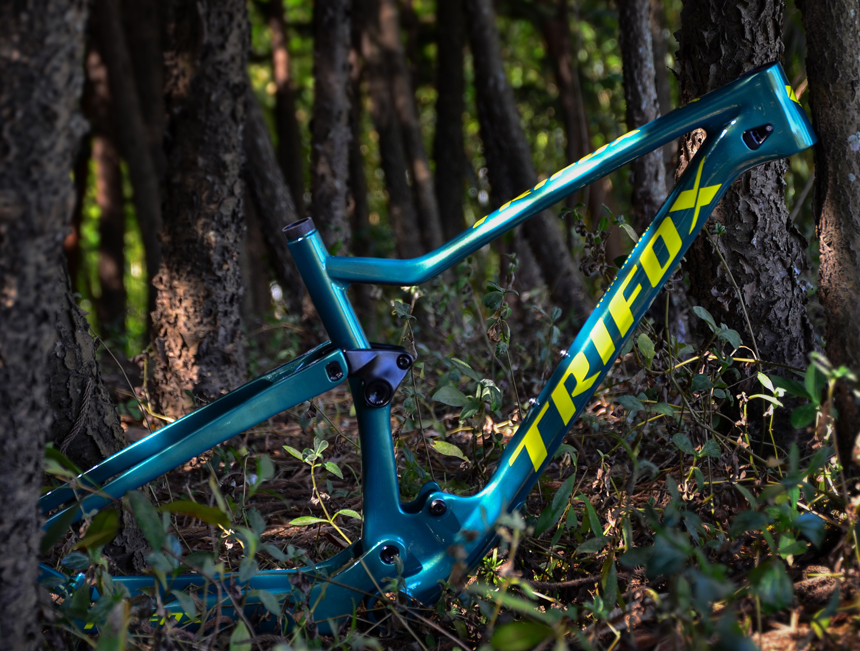
Conclusion
For cyclists looking for superior performance, durability, and comfort, Trifox carbon fiber bicycle frames are the ideal choice. Whether you’re racing, riding for fitness, or exploring the outdoors, Trifox provides frames that can handle it all. With cutting-edge designs and materials, Trifox is at the forefront of carbon fiber technology.

When it comes to choosing the right bicycle frame, two materials dominate the conversation: carbon fiber and aluminum. Each offers distinct advantages, so the decision often depends on your riding style, budget, and performance goals. At Trifox, we specialize in both carbon and aluminum frames, ensuring that you have the perfect bike for your needs. Let's dive into the key differences between these two materials.
Carbon Fiber Frames: Lightweight & High Performance
Carbon fiber frames are renowned for their lightweight properties and superior performance. The material’s high strength-to-weight ratio allows for more efficient power transfer, which means you can accelerate faster and ride longer without feeling weighed down. Carbon also absorbs vibrations from the road or trail, offering a smoother, more comfortable ride.
However, carbon frames come with a higher price tag due to their advanced manufacturing process and performance benefits. They are also less durable when exposed to significant impact or crashes, though their lightweight and ride quality often make them the preferred choice for competitive cyclists and long-distance riders.
Aluminum Frames: Durable & Affordable
Aluminum frames are known for their durability and cost-effectiveness. They are heavier than carbon but still relatively lightweight, making them a great option for riders who want solid performance at a more affordable price point. Aluminum is also more resistant to impact damage, making it a popular choice for rugged terrains and beginners.
While aluminum doesn't offer the same level of vibration damping as carbon, it is still a reliable material that provides excellent strength and longevity at a lower cost.
Which Should You Choose?
If you prioritize high performance, a lightweight feel, and a smooth ride, a carbon frame is the way to go. On the other hand, if you're looking for durability, affordability, and versatility, an aluminum frame offers great value without compromising too much on performance.
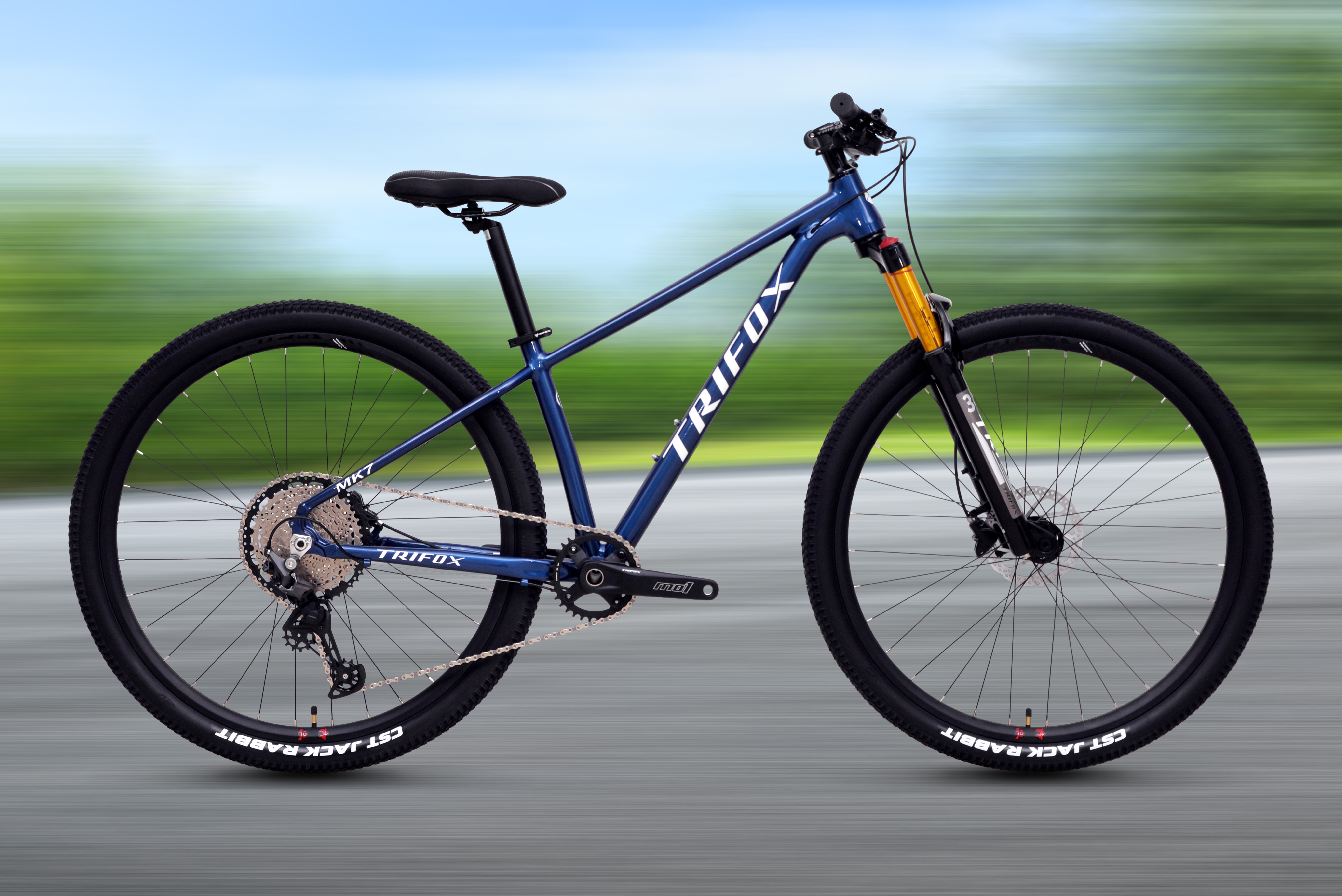
At [Trifox Official Website], we offer both carbon and aluminum frames, allowing you to choose the best option for your cycling needs.

When it comes to cycling, the right bike can make a world of difference. Whether you're a seasoned cyclist or just getting started, choosing the right materials and design can elevate your performance and enjoyment on the road. One such bike option gaining traction among enthusiasts is the aluminium aero road bike. If you're in the market for a high-performance bike that offers a balance of speed, durability, and affordability, this could be the perfect choice for your next cycling adventure. But what exactly makes aluminium aero road bikes such a great option? Let’s break it down.
1. Aerodynamic Efficiency
Aerodynamics play a pivotal role in road cycling, especially if you’re looking to boost your speed and reduce fatigue over long distances. The “aero” design of these bikes is not just a cosmetic feature – it’s all about reducing wind resistance. Aluminium aero road bikes are built with sleek, aerodynamic frames that cut through the air more efficiently, allowing you to maintain higher speeds with less effort. The shape of the frame, handlebars, and even the wheels are all designed to minimize drag, giving you a noticeable advantage when racing or pushing your limits.
If you're cycling on long stretches of road or tackling challenging climbs, the aerodynamic benefits of an aluminium aero road bike can make your ride smoother and faster, helping you get the most out of your energy.
2. Lightweight Yet Strong
Aluminium is widely recognized for its excellent strength-to-weight ratio. When compared to other materials like steel or titanium, aluminium offers the perfect balance between durability and lightweight construction. A lighter bike allows for faster acceleration and better maneuverability, which can be particularly important in competitive settings or on more challenging terrains.
Unlike heavier steel frames that can feel cumbersome, an aluminium frame provides the rigidity and strength needed for a responsive and stable ride while keeping the overall weight down. This makes the aluminium aero road bike a top choice for cyclists who want to shave off seconds during a race or simply enjoy an effortless ride on hilly or winding roads.
3. Affordability and Durability
While high-end carbon fiber bikes can cost a small fortune, aluminium aero road bikes offer exceptional value without compromising on performance. For cyclists on a budget or those who are new to the sport, aluminium bikes provide a more affordable entry point without sacrificing key features like speed and durability.
Moreover, aluminium is incredibly durable and resistant to corrosion. While it may not have the same level of shock absorption as carbon fiber, it provides a solid and sturdy feel on the road, offering long-lasting reliability. This makes aluminium aero bikes an excellent choice for cyclists who want a bike that will stand up to regular use over the years, regardless of weather conditions or road surface types.
4. Versatility for Various Terrains
One of the unique advantages of the aluminium aero road bike is its versatility. Many models, like the [Trifox 700c Aluminum Alloy Aero Gravel Road Bike], are designed to handle not just smooth paved roads but also gravel and more rugged terrain. This means you can take your bike on a variety of cycling adventures – whether you're racing down a smooth highway or exploring off-road trails.
The ability to take your bike off-road adds a layer of flexibility to your cycling experience, allowing you to explore new routes without worrying about your bike’s capability to handle different types of surfaces.
5. Modern Design and Technology
Aluminium aero road bikes come with modern design elements that enhance comfort, performance, and overall ride quality. Innovations in frame geometry and componentry ensure that you’ll have a bike that handles well and is equipped with advanced technology to suit your cycling needs. Whether it's through internal cable routing for a clean look or disc brakes for enhanced stopping power in all conditions, these bikes come ready to meet the demands of both casual riders and competitive athletes alike.
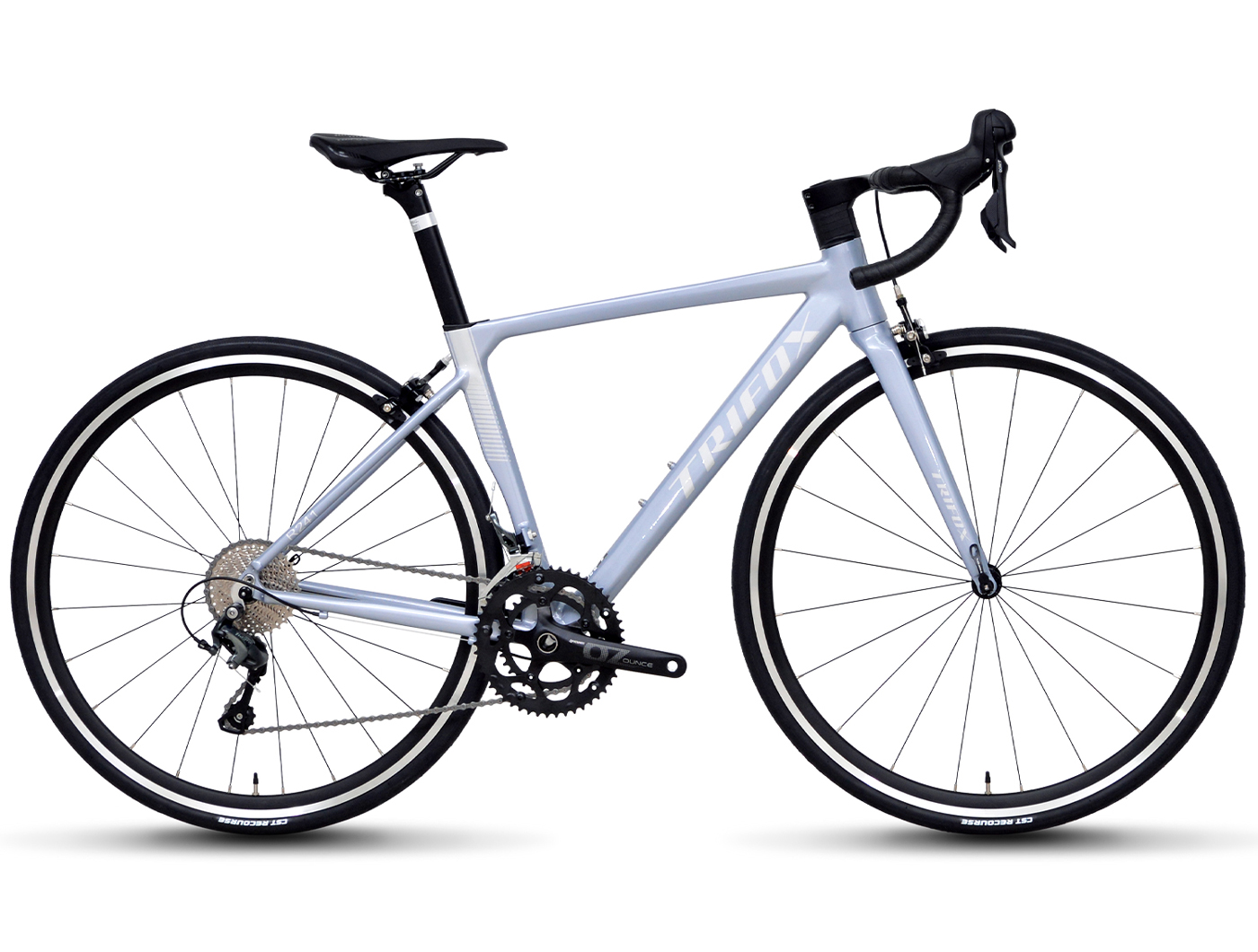
Final Thoughts
An aluminium aero road bike offers the perfect blend of aerodynamic efficiency, lightweight design, affordability, and durability. With the ability to tackle both road and gravel paths, and a host of modern features that cater to different cycling needs, it’s no wonder that this type of bike is becoming a go-to choice for cycling enthusiasts. Whether you're preparing for your next big cycling adventure or just looking to upgrade your current setup, the aluminium aero road bike is a worthy investment that promises performance, versatility, and value.
























































